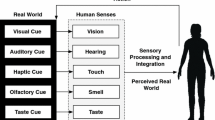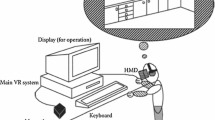Abstract
In recent years, the production of consumer goods has exceeded that of industrial products. This has led to changes in the areas of design and production. The target users of industrial products (in the Business to Business—B2B market) are industries that decide to purchase a product on the basis of its technical features, functions and performance. Differently, the target users of consumer products (in the Business to Consumer—B2C market) are the consumers who choose a product driven by other aspects, besides features and functions, such as the perceived value, the expected benefits, the emotions elicited, as well as features and functions. This has brought a paradigm shift in the design process. And in fact, the design of consumer products is increasingly focusing on the so-called user experience. The designer must not design only the product, but also the user experience in relation to its use. The resulting product should have a high perceived value and generate positive emotions in the consumer. These factors make a successful product on the market. Therefore, the role of the designer is designing the products and the perceptual aspects of their use, that is, designing the user experience and deriving from that the products’ specifications. Consequently to that, the design process has changed in the last years. In fact, the user is now at the center of the design process, named user-centered design. Being the new focus the target users, the evaluation of their interaction with the new designed products is expected to be rigorous and systematic. An efficient approach has proved to be one in which the validation is made up by involving users in the early stages of the product design. Since typically at the level of the concept the product, or a prototype that is comparable with it at the perceptual level, is not available, it is not possible to make a thorough validation of its use with users. However, new methodologies of Virtual Prototyping allow us to simulate multisensory user interaction with product concepts early in the design process. This chapter introduces the use of interactive Virtual Prototyping (iVP) methodology for the design of the user experience with the concept of a new product. Interactive components of new products and their behavior are simulated through functional models, and users can experience them through multisensory Virtual Reality (VR) technologies.
Access this chapter
Tax calculation will be finalised at checkout
Purchases are for personal use only
Similar content being viewed by others
References
Goldenberg J, Mazursky D (2002) Creativity in product innovation. Cambridge University Press, Cambridge
Bordegoni M (2010) Exploitation of designers and customers’ skills and creativity in product design and engineering. In: Fukuda S (ed) Emotional engineering: service development. Springer, London
Sweeney JC, Soutar GN (2001) Consumer perceived value: the development of a multiple item scale. J Retail 77(2):203–220
Akshay RR, Kent B (1989) The effect of price, brand name, and store name on buyers’ perceptions of product quality: an integrative review. Monroe J Mark Res 26(3):351–357
Norman DA (1988) The design of everyday things. Doubleday, New York
Spence C, Gallace A (2011) Multisensory design: reaching out to touch the consumer. Psychol Mark 28(3):267–308
MacLean KE (2009) Putting haptics into the ambience. IEEE Trans Haptics 2(3):123–135
Magnusson C, Szymczak D, Brewster S (eds) (2012) Haptic and audio interaction design. Information systems and applications, incl. internet/web, and HCI. Lecture notes in computer science, vol 7468. Springer, Heidelberg, pp 131–140
Oberg E (2008) Machinery’s handbook. Industrial Press Inc., New York
Sakao T, Lindahl M (eds) (2010) Introduction to product/service-system design. Springer, London
Fukuda S (2012) Customer productivity: a measure for product and process development with customers. In: Proceedings of ASME IDETC/CIE conference
Ulrich KT, Eppinger SD (2004) Product Design and Development. McGraw-Hill, New York
Schumpeter JA (1934) The theory of economic development. Harvard University Press, Cambridge
Wicker AW (1969) Attitudes versus actions: the relationship of verbal and overt behavioral responses to attitude objects. J Soc Issues 25(4):41–78
Loftus E, Wells G (1984) Eyewitness testimony: psychological perspectives. Cambridge University Press, New York
Roomba robot (2012) http//www.irobot.com/. Accessed July 2012
Segway (2012) http://www.segway.com/. Accessed July 2012
The Economist web page (2012) http://www.economist.com/topics/digital-fabrication. Accessed July 2012
Doellner G, Kellner P, Tegel O (2000) DMU digital mock-up and rapid prototyping in automotive product development. J Integr Des Process Sci 4(1):55–66 (IOS Press)
Bordegoni M (2011) Product virtualization: an effective method for the evaluation of concept design of new products. In: Bordegoni M, Rizzi C (eds) Innovation in product design—from CAD to virtual prototyping. Springer, London, pp 117–142
Burdea G, Coiffet P (2003) Virtual reality technology, 2nd edn. Wiley, New Jersey
Burdea GC (2000) Haptic feedback for virtual reality. Int J Des Innov Res 2(1):17–29 (Special issue on Virtual Prototyping)
Biggs SJ, Srinivasan MA (2002) Haptic interfaces. In: Stanney K (ed) Handbook of virtual environments: design, implementation, and applications. Lawrence Earlbaum, Inc., London, pp 93–116
Ferrise F, Bordegoni M, Cugini U (2012) Interactive virtual prototypes for testing the interaction with new products. Comput Aided Des Appl 10(3):515–525
Doyle P (2000) Value-based marketing: marketing strategies for corporate growth and shareholder value. Wiley, Chichester
Lofman B (1991) Elements of experiential consumption: an exploratory study. In: Holman RH, Solomon MR (eds) Advances in consumer research, 18th edn. Association for Consumer Research, Provo, pp 729–773
Klatzky RL, Lederman SJ, Matula D (1993) Haptic exploration in the presence of vision. J Exp Psychol Hum Percept Perform 19(4):726–743
Millar MG, Millar KU (1996) The effects of direct and indirect experience on affective and cognitive responses and the attitude–behavior relation. J Exp Soc Psychol 32(6):561–579
Norman DA (1988) The design of everyday things. Doubleday, New York
Buxton B (2007) Sketching user experiences: getting the design right and the right design. Morgan Kaufmann, Interactive Technologies)
Benyon D, Turner P, Benyon S (2005) Designing interactive systems: people, activities, contexts, technologies. Addison Wesley, Boston
MacLean KE (2008) Haptic interaction design for everyday interfaces. Rev Hum Factors Ergon 4(1):149–194
Burdea GC (2000) Haptic feedback for virtual reality. Int J Des Innov Res 2(1):17–29 (Special issue on Virtual Prototyping)
Hannaford B, Okamura AM (2008) Haptics. In: Siciliano B, Khatib O (eds) Handbook of robotics. Springer, New York
Shin S, Lee I, Lee H, Han G, Hong K, Yim S, Lee J, Park Y, Kang BK, Ryoo HD, Kim DW, Choi S, Chung WK (2012) Haptic simulation of refrigerator door. IEEE haptics symposium (HAPTICS), pp 147–154
Strolz M, Groten R, Peer A, Buss M (2011) Development and evaluation of a device for the haptic rendering of rotatory car doors. Ind Electron IEEE Trans Ind Electron 58(8):3133–3140
Ferrise F, Bordegoni M, Graziosi S (2012) A method for designing users’ experience with industrial products based on a multimodal environment and mixed prototypes. Comput Aided Des Appl 10(3):461–474
MOOG (2012) HapticMaster. http://www.moog.com/products/haptics-robotics/. Accessed July 2012
LMS (2012) http://www.lmsintl.com/. Accessed July 2012
Jain A, Nguyen H, Rath M, Okerman J, Kemp CC (2010) The complex structure of simple devices: a survey of trajectories and forces that open doors and drawers. In: Proceedings of the IEEE RAS/EMBS international conference on biomedical robotics and biomechatronics (BIOROB)
Ferrise F, Ambrogio M, Gatti E, Lizaranzu J, Bordegoni M (2011) Virtualization of Industrial Consumer Products for Haptic Interaction Design. ASME Conf Proc 2011(44328):9–18
Author information
Authors and Affiliations
Corresponding author
Editor information
Editors and Affiliations
Rights and permissions
Copyright information
© 2013 Springer-Verlag London
About this chapter
Cite this chapter
Bordegoni, M., Cugini, U., Ferrise, F. (2013). Multisensory User Experience Design of Consumer Products. In: Fukuda, S. (eds) Emotional Engineering vol. 2. Springer, London. https://doi.org/10.1007/978-1-4471-4984-2_14
Download citation
DOI: https://doi.org/10.1007/978-1-4471-4984-2_14
Published:
Publisher Name: Springer, London
Print ISBN: 978-1-4471-4983-5
Online ISBN: 978-1-4471-4984-2
eBook Packages: EngineeringEngineering (R0)




